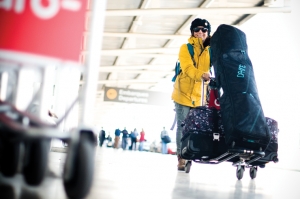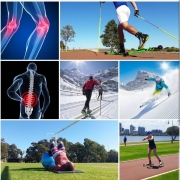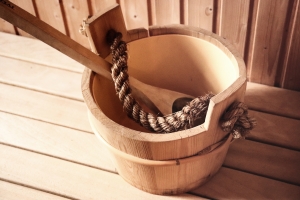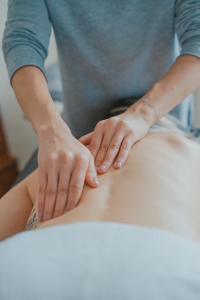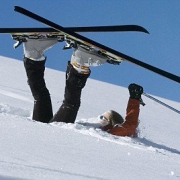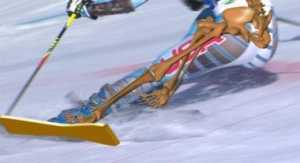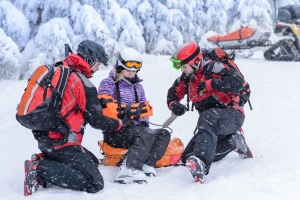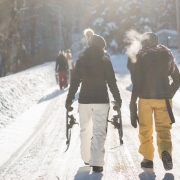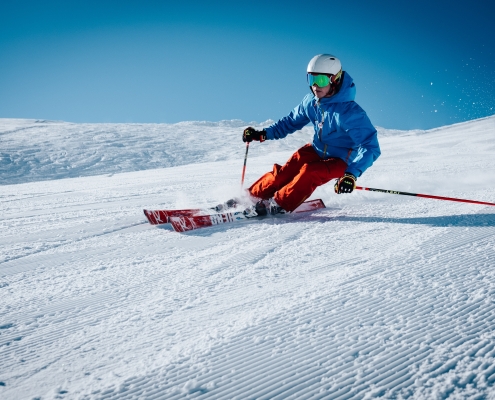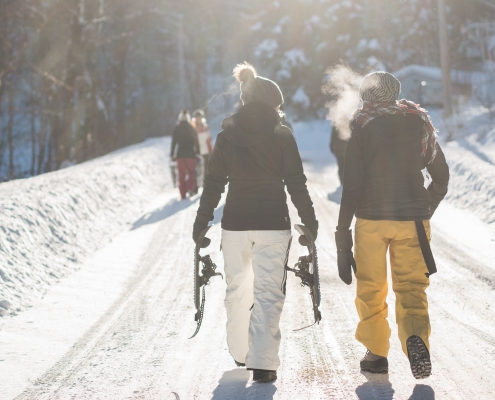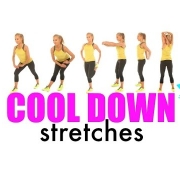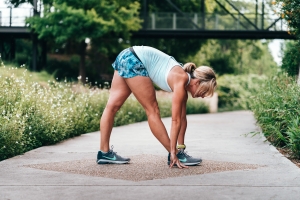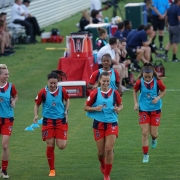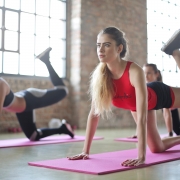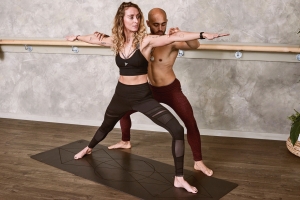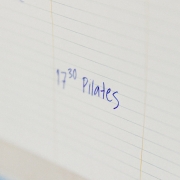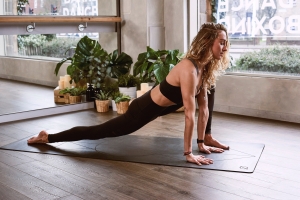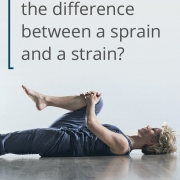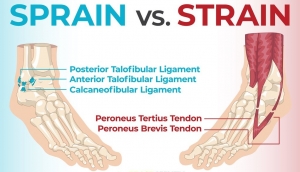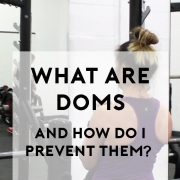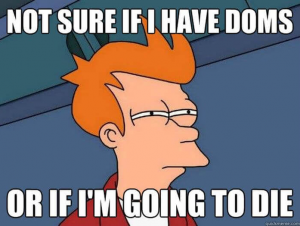3 things to take with you on a ski holiday
The best things to take on holiday are small and light and easy to pack. Here are some ideas of things to take on a ski holiday with you that will aid your recovery and keep you more comfortable.
Spikey ball / tennis ball – using a ball for self-massage is an age old trick that really works. Placing a ball against a wall or on the floor and leaning the area of your body against it that needs loosening off will allow you to easily apply pressure. Then all you need to do in move around in small back and forth or circular movements to help loosen the muscles. If you are using it up against the wall and are finding it hard to keep control of the ball try putting the ball in a ski sock so you have something to keep hold of.
Massage stick – a massage stick is similar to a rolling pin and is again a great tool for self-massage. Unlike a foam roller or a ball you use your hands on the handles of the roller to apply pressure. Make sure you invest in one that you enjoy using and find beneficial. They come in many different styles and some are more brutal than others. Choosing the right one is down to personal preference. They can be used against the skin or over thin, close fitting clothing.
Compression bandage – using compression after an acute injury is a great way to minimise swelling and aid recovery. Put the bandage on over the injured area as soon as possible after the injury. Make it nice and tight but don’t cut off blood supply! A compression bandage can also be used as a simple joint strapping to support a sore joint in order to be more comfortable exercising. If you pick up a small niggle when away skiing the bandage can be used to support the area for a short time until you get home to have it checked. Don’t be fooled into thinking that it will enable you to continue skiing if you’ve done a proper injury though, it may just make you a bit more comfortable moving around until you get home.
Bonus: Ice packs are not on this list as getting your hands on a freezer on holiday is not always easy … and you are on a ski holiday and hopefully surrounded by lots of nice deep snow! Ice is great at aiding recovery after intense exercise. Keep your salopettes on and go bury your legs in the snow, once you feel the cold starting to come through to your skin stay put for 10 minutes. If you get a minor injury that would benefit from ice you can also take a plastic bag out and gather some snow. Fold the bag to prevent leaks and wrap it in a towel – a homemade ice pack. Icepacks can be used for about 10 minutes at a time as regularly as needed after a fresh injury to help minimise acute swelling. Keep checking your skin to make sure you do not get a burn or blister – it is likely to be red from the ice but if you press it it should go pale and quickly return to red, if this doesn’t happen or it looks mottled or discoloured then remove the ice and give your skin time to warm up and recover before using it again.


